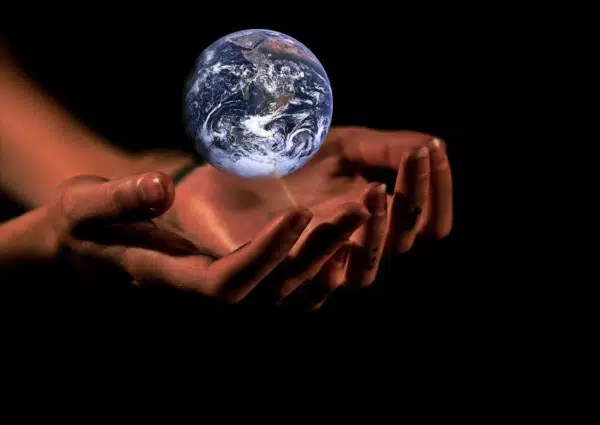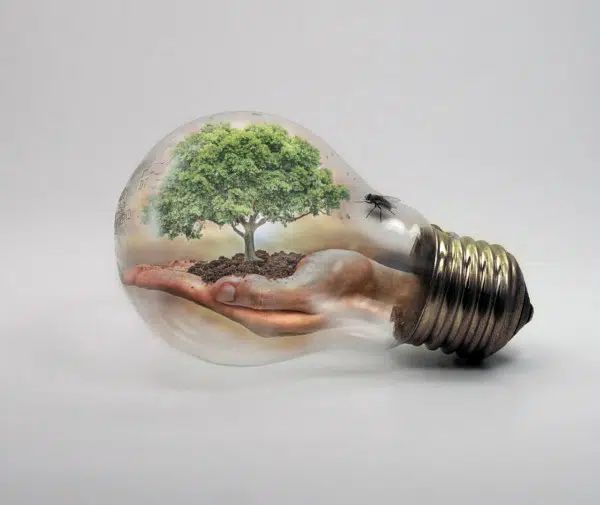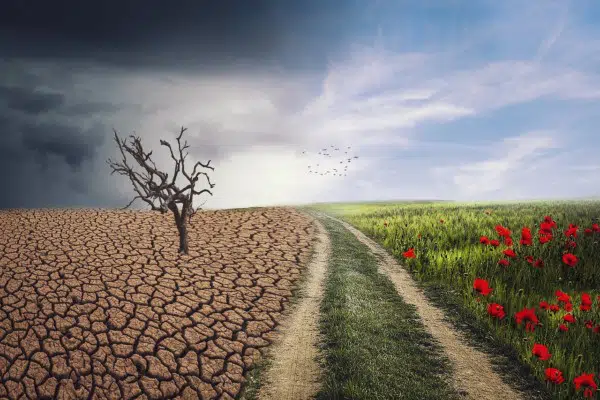In case you missed it – our planet isn’t really doing great. And, finding effective ways to help the environment should top our priorities. That is if we must save ourselves, and generations to come.
Climate change is already happening; there’s plastic in our oceans, and deforestation is devastating the rainforest. It’s all a bit too much.
The worst thing is we are the only ones to blame -we are the main culprits in all this. We use plastics daily, cut down trees unnecessarily, use fossil fuels, etc. in other words, we are destroying ourselves gradually.
BUT it’s not all doom and gloom; despite the harrowing nature of the previous sentence, there is hope. We all have the power to make a difference. The most important thing is to realize our previous mistakes and find ways to rectify the mess.
We must come up with ways to help the environment, lest we all perish with it. But how can we do this? What are the hard choices that each one of us should make?
Let’s explore together some of the most effective ways to help the environment.

Top Ways to Help the Environment
Learning how to help the environment in daily life is crucial for our survival.
But, where should we start?
Check out these simple but life-changing options.
1. Improve your Eco Credentials with Small Changes
There are probably some simple switches you could easily make in your household which could help preserve our lovely planet.
Small things like switching off your lights, using less single-use plastic in favor of reusable products (like tote bags!), and trying out eco-friendly toilet paper can make a huge difference, even if they seem small!
Invest in a portable, reusable coffee cup, use washable cleaning cloths over sponges, and switch to shampoo bars to reduce your plastic use.
With a few sustainable swaps, you’ll be massively helping the planet in the process!
2. Reduce your Waste
Food waste is one of the biggest causes of climate change.
It is among the great ways to help preserve our planet.
The annual value of food wasted globally is $1 trillion. That’s one million million or about five of Jeff Bezos. An area of China is used to grow food that’s never been eaten, meaning all of the carbon produced by farming goes to waste.
One of the best ways to reduce your food waste is to write a shopping list and plan your meals out for the week ahead.
This helps you stick to buying just the food you need, rather than spontaneously picking up food that you might end up throwing out because it didn’t get used.
You could also consider purchasing local food produced nearby – this helps reduce transport emissions and costs.
See Related: How to be an Environmental Activist
3. Travel Responsibly
Need to get from A to B? Is B quite close to A? If so, walk, run, or cycle!
Transport is easily one of the biggest polluters affecting our planet, with cars and larger vehicles contributing tremendously to climate change and greenhouse gases.
Reduce your carbon footprint by using alternative ways to travel. Walking and cycling are much better for not only your health but the planets too. It doesn’t mind if you walk all over it – it’s better than chucking out bits of nasty carbon.
If that’s not possible, try a staycation! Instead of jetting off to another country, think about staying closer to home.
A short-haul flight can contribute 10% of your yearly emissions. So, scout around your local area instead; you never know what you might find – some of the most scenic vacation spots are usually right under your nose!
These are just a few simple ways in which YOU, yes you, could help preserve our precious planet.
They may seem fairly small and irrelevant in the grand schemes of things, but imagine if we all did these? The world would be a much cleaner, greener place.
There is still hope for our Earth and everything in it. It may seem an impossible task, but we can all work together and make a big difference!
4. Conserve Electricity

Reducing energy consumption is one of the best ways to protect the environment. Embracing ways to use less electricity at home will not only save you money, but it’s a win for the planet.
Try these quick tips to help reduce energy consumption around your home:
- Switch from using incandescent bulbs to more energy-efficient LEDs or CFLs.Use a smart or programmable thermostat to help automatically regulate home temperatures during different seasons.
- Use smart power strips – this helps to turn off the power when electronics aren’t in use. By leaving your gadgets plugged in when not in use, they produce phantom power, which goes to waste. Smart power strips come in handy when you want to reduce energy wastage.
- Invest in ENERGY STAR certified models when purchasing a new home appliance like an oven, dishwasher, refrigerator, TV, water heater, dehumidifier, dryer etc.
- Keep your HVAC system in good condition always. Repair, replace and maintain its vents, air filters, furnace, coil, and other units.
- Seal air leaks around windows and doors. You can use air-sealing techniques like caulking and weather stripping.
- Adjust your water heater, refrigerator and freezer temperatures to conserve energy.
- Cut back on hot water consumption when doing dishes or washing clothes.
- Install solar panels or use other renewable sources of energy like windmills.
- Insulate your home to the recommended heat resistance level (“R-Value”) for your area.
- Combine ceiling fans and the air conditioning system. When it’s not too hot, use the ceiling fans alone to keep your home at the right temperature.
5. Check Your Water Consumption
Using less water is a simple way to help the environment at home. Adjust the way you consume water to conserve water. Some of the adjustments that you can make include:
- Fix leaky faucets
- Please turn off the water while you brush your teeth and only turn it on when you need to rinse
- Invest in rain gutters and downspouts to collect and use rainwater
- Shorten your shower
- Only wash clothes or do dishes when the machine is full.
- Aerate faucets, use sprinklers, and install efficient showerheads and low-flow restrictors to use water more efficiently.
6. Recycle and Reuse to Help Save the Environment at Home
There are plenty of items that you don’t have to throw away after use. You can up-cycle, recycle or reuse them in a different way to help save the environment.
All you need is to get a little bit creative and turn that unwanted or useless item into a treasure. Creating something beautiful from trash, such as toys, jewelry, or artwork, is not only satisfying but it’s also one of the most effective ways to help the environment.
Also, it keeps items out of trash bins and landfills and prevents you from making new purchases, which use lots of resources to create.
Let your imagination soar with craft ideas. For example, instead of purchasing new pots to plant succulents, make use of items around your house like old bins. Get inspiration from YouTube videos or Pinterest.
Children also enjoy making new things. Therefore, instead of throwing stuff into the waste bin, consider creating fun craft projects for your kids. For example, they can create egg carton caterpillars.
Be sure to educate yourself on what can or cannot be recycled in your litter cans at home. You can find out how to recycle special items like faulty appliances, electronics, or batteries. And if they cannot be recycled, find out proper disposal sites or drop-off points for the local municipality.
See Related: Best Solar Lamp Posts
7. Choose Reusable over Single-use

Single-use items and plastics end up somewhere in the landfill. All these kinds of wastes can have a devastating effect on our planet, soil, oceans, and marine life.
To keep our planet safe, we need to embrace the use of reusable items. We can help our environment if we cease using disposable straws, cups, grocery bags, utensils, and other containers.
Switching to reusable items and educating others on their use will lead to less trash piling up in landfills. That is how to save the environment from pollution, and it goes a long way in keeping the planet safe for all living species.
See Related: Best Products to Help Climate Change
8. Plant Vegetables
There are numerous ways to save the environment, and growing your own vegetables is an excellent one. But, when planting your vegetables, ensure you avoid using herbicides and pesticides. This will help you enjoy fresh organic produce from your farm.
Use the right seeds and avoid GMOs. Heirloom seeds are great seeds to start you off. Make your own compost, and you’ll rest easy knowing that you are feeding your family homegrown foods with no chemicals.
The use of chemicals destroys the environment, including killing moths, butterflies, beetles, spiders, ladybirds, and bees, all of which are key to our diversity.
9. Use Reusable or Biodegradable Shopping Bags
Recycling shopping bags is also among the perfect ways to save our environment. You don’t have to buy a new shopping bag every time you visit Walmart. Invest in a reusable one like a cloth shopping bag that you can bring to the store every time you want to do some shopping.
Plastic bags aren’t biodegradable. Therefore, when you throw them in the bin, they end up in landfills. That means they end up polluting our oceans, endangering marine life, and infiltrating our food sources. For this reason, try using reusable shopping bags to save the environment.
If you don’t want to go the reusable way, biodegradable ones are also an excellent option. Biodegradable bags are mostly made from natural materials that won’t take decades to decompose. They are easily broken down into water, CO2, and heat, by bacteria and other biological organisms.
10. Share the Knowledge and Inspire Others
Most people who destroy the environment don’t have facts or don’t know the ways to save our environment. Make it your duty to share with people around you about different daily actions they can do at home, at the workplace, or in schools that can help save the environment.
The little efforts you make to inspire others could have a mass chain reaction if everyone joins in. Share the knowledge, and let’s make the world a better place for us and the future generations.
